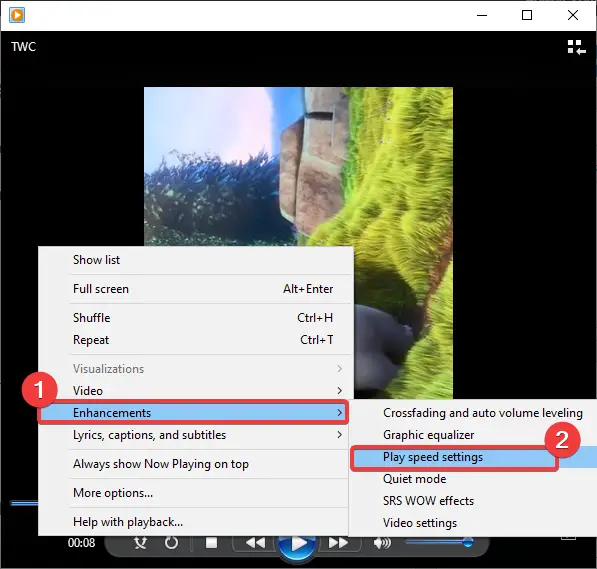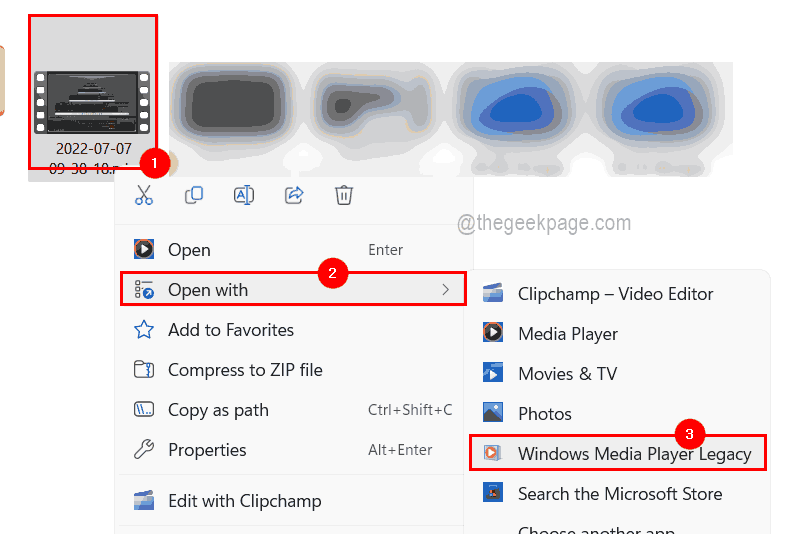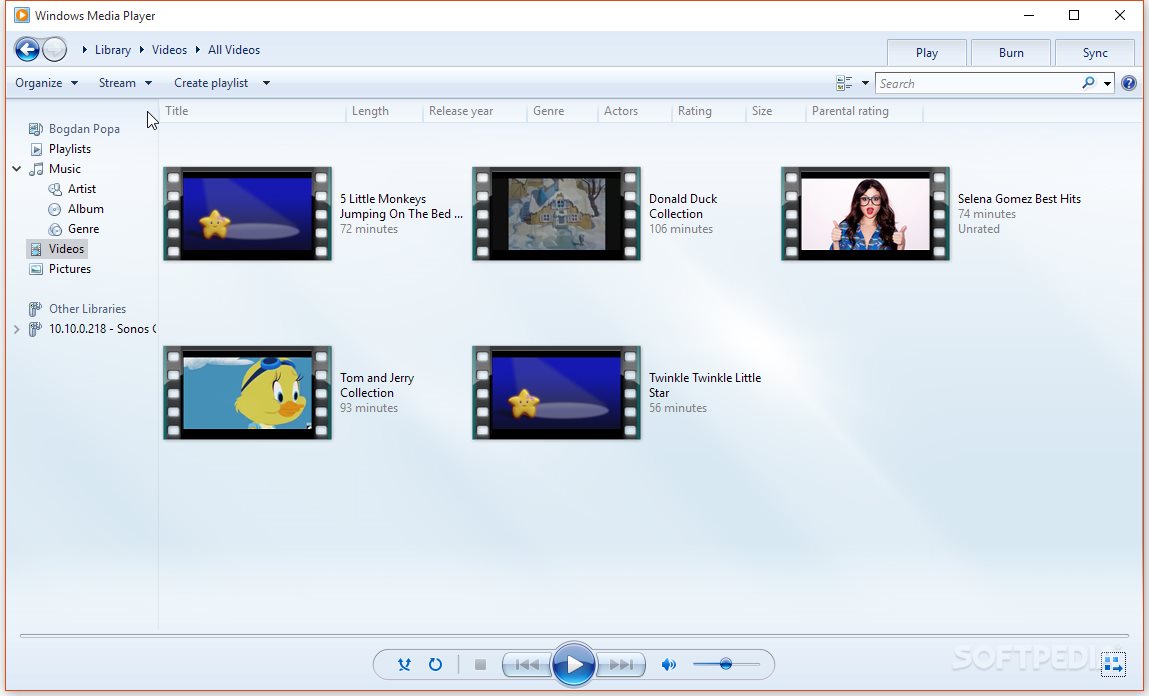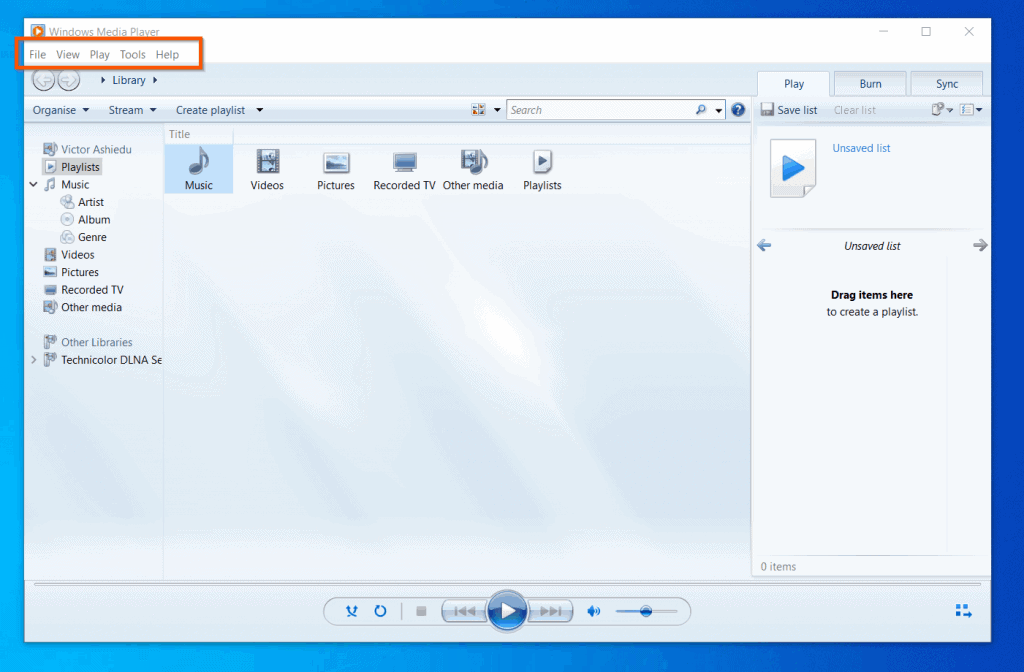A Comprehensive Guide To Media Playback On Windows 10: Exploring The Capabilities Of The Windows Media Player
A Comprehensive Guide to Media Playback on Windows 10: Exploring the Capabilities of the Windows Media Player
Related Articles: A Comprehensive Guide to Media Playback on Windows 10: Exploring the Capabilities of the Windows Media Player
Introduction
In this auspicious occasion, we are delighted to delve into the intriguing topic related to A Comprehensive Guide to Media Playback on Windows 10: Exploring the Capabilities of the Windows Media Player. Let’s weave interesting information and offer fresh perspectives to the readers.
Table of Content
- 1 Related Articles: A Comprehensive Guide to Media Playback on Windows 10: Exploring the Capabilities of the Windows Media Player
- 2 Introduction
- 3 A Comprehensive Guide to Media Playback on Windows 10: Exploring the Capabilities of the Windows Media Player
- 3.1 Understanding the Features of Windows Media Player
- 3.2 Advantages of Using Windows Media Player
- 3.3 Exploring the Limitations of Windows Media Player
- 3.4 FAQs about Windows Media Player
- 3.5 Tips for Using Windows Media Player
- 3.6 Conclusion
- 4 Closure
A Comprehensive Guide to Media Playback on Windows 10: Exploring the Capabilities of the Windows Media Player
![[With Picture] How to Change Windows Media Player Playback Speed in](https://www.videoconverterfactory.com/tips/imgs-self/windows-media-player-playback-speed/windows-media-player-playback-speed-01.png)
Windows 10, Microsoft’s latest operating system, comes equipped with a built-in media player known as the Windows Media Player. This versatile application provides users with a straightforward and reliable means to enjoy their multimedia content on their Windows 10 devices. While it may not boast the advanced features of some third-party players, Windows Media Player remains a valuable tool for basic playback needs and offers a user-friendly interface for navigating and managing media libraries.
Understanding the Features of Windows Media Player
Windows Media Player offers a range of capabilities designed to enhance the user’s media experience. These features include:
1. Audio and Video Playback: The primary function of Windows Media Player is to play back various audio and video formats, including MP3, WMA, WAV, AVI, and WMV. This makes it a versatile tool for listening to music, watching movies, and viewing personal videos.
2. Media Library Management: Windows Media Player allows users to organize their media files into a library, providing a centralized location for browsing and accessing their music, videos, and podcasts. Users can create playlists, sort files by various criteria, and easily navigate their media collection.
3. CD and DVD Playback: Windows Media Player can play audio CDs and DVDs, enabling users to enjoy their physical media collections on their computer. This feature provides a convenient way to access music and movies stored on discs.
4. Internet Radio and Podcasts: The application supports streaming audio content from online sources, including internet radio stations and podcasts. Users can subscribe to their favorite podcasts, listen to live radio broadcasts, and enjoy a wide variety of audio content directly within the player.
5. Sync with Portable Devices: Windows Media Player can sync media files with portable devices such as smartphones, tablets, and MP3 players. This allows users to take their music, videos, and playlists on the go.
6. Basic Audio and Video Editing: While not a full-fledged editing suite, Windows Media Player offers basic editing features for audio and video files. These include trimming, cutting, and joining files, allowing for simple modifications to media content.
Advantages of Using Windows Media Player
While many third-party media players exist, Windows Media Player offers several advantages that make it a compelling choice for many users:
1. Accessibility and Integration: Windows Media Player is pre-installed on Windows 10, making it readily available to all users without the need for additional downloads or installations. Its seamless integration with the operating system ensures a smooth and familiar user experience.
2. Simplicity and User-friendliness: The application boasts a straightforward and intuitive interface, making it easy for users of all technical skill levels to navigate and use. Its minimalist design prioritizes ease of use over complex features, ensuring a smooth and enjoyable media experience.
3. Lightweight and Resource-Efficient: Windows Media Player is designed to be lightweight and resource-efficient, minimizing its impact on system performance. This is particularly beneficial for users with older or less powerful computers, as it ensures smooth playback without straining system resources.
4. Basic Functionality: For users who primarily require basic media playback features, Windows Media Player provides all the necessary tools without overwhelming them with complex functionalities. Its simplicity makes it an ideal choice for users who simply want to listen to music or watch videos without unnecessary complications.
Exploring the Limitations of Windows Media Player
Despite its strengths, Windows Media Player does have certain limitations that may make it less suitable for some users:
1. Limited Format Support: While Windows Media Player supports a range of common audio and video formats, it may not be compatible with all file types. This could limit users’ ability to play certain media files, particularly those in less common or niche formats.
2. Lack of Advanced Features: Compared to some third-party media players, Windows Media Player lacks advanced features such as audio equalization, subtitle customization, and video playback enhancements. This may be a drawback for users who require a more comprehensive and customizable media experience.
3. Limited Customization Options: Windows Media Player offers minimal customization options for its interface and functionality. While this contributes to its simplicity, it may limit users’ ability to personalize their media experience according to their preferences.
FAQs about Windows Media Player
1. How do I open Windows Media Player?
To open Windows Media Player, simply search for "Windows Media Player" in the Windows search bar and click on the result. Alternatively, you can locate the application in the Start Menu under "Windows Accessories."
2. Can I play music from my phone on Windows Media Player?
Yes, you can play music from your phone on Windows Media Player using a USB cable. Connect your phone to your computer, enable file transfer mode, and then open Windows Media Player. The music files on your phone should be accessible within the player’s library.
3. How do I create a playlist in Windows Media Player?
To create a playlist, open Windows Media Player and go to the "Library" tab. Right-click on the "Playlists" section and select "New Playlist." You can then drag and drop the desired songs or videos into the playlist.
4. Can I rip music from CDs to my computer using Windows Media Player?
Yes, Windows Media Player can rip music from CDs to your computer. Insert the CD into your CD drive, open Windows Media Player, and select the "Rip Settings" option. You can choose the format and quality of the ripped files.
5. How do I update Windows Media Player?
Windows Media Player is typically updated automatically as part of Windows updates. To check for updates manually, go to "Settings" > "Update & Security" > "Windows Update" and click on "Check for updates."
Tips for Using Windows Media Player
1. Customize Playback Settings: Windows Media Player allows users to customize playback settings such as volume, equalizer, and playback speed. Access these settings through the "Options" menu within the player.
2. Use Playlists for Organization: Creating playlists allows you to organize your media files into categories based on genre, mood, or any other criteria you prefer. This can make it easier to find and access your favorite songs and videos.
3. Explore the "Library" Tab: The "Library" tab provides a comprehensive overview of your media collection, allowing you to browse your music, videos, and podcasts. Use the search bar to quickly locate specific files.
4. Take Advantage of Internet Radio and Podcasts: Windows Media Player offers access to a wide range of internet radio stations and podcasts. Subscribe to your favorite podcasts and enjoy a diverse selection of audio content.
5. Sync with Portable Devices: If you want to take your media collection on the go, use the "Sync" feature to transfer your music, videos, and playlists to your portable devices.
Conclusion
Windows Media Player remains a valuable tool for users who require a straightforward and reliable media player. Its simplicity, accessibility, and integration with Windows 10 make it a convenient choice for basic media playback needs. While it may lack the advanced features of some third-party players, its user-friendly interface, comprehensive library management, and versatile playback capabilities make it a solid option for many users. As you navigate the world of media playback on Windows 10, consider the advantages of Windows Media Player and its potential to enhance your media experience.





![How to Play Blu-ray on Windows Media Player [Complete Guide]](https://www.avaide.com/images/2024/02/use-the-playback-controls.jpg)


Closure
Thus, we hope this article has provided valuable insights into A Comprehensive Guide to Media Playback on Windows 10: Exploring the Capabilities of the Windows Media Player. We hope you find this article informative and beneficial. See you in our next article!